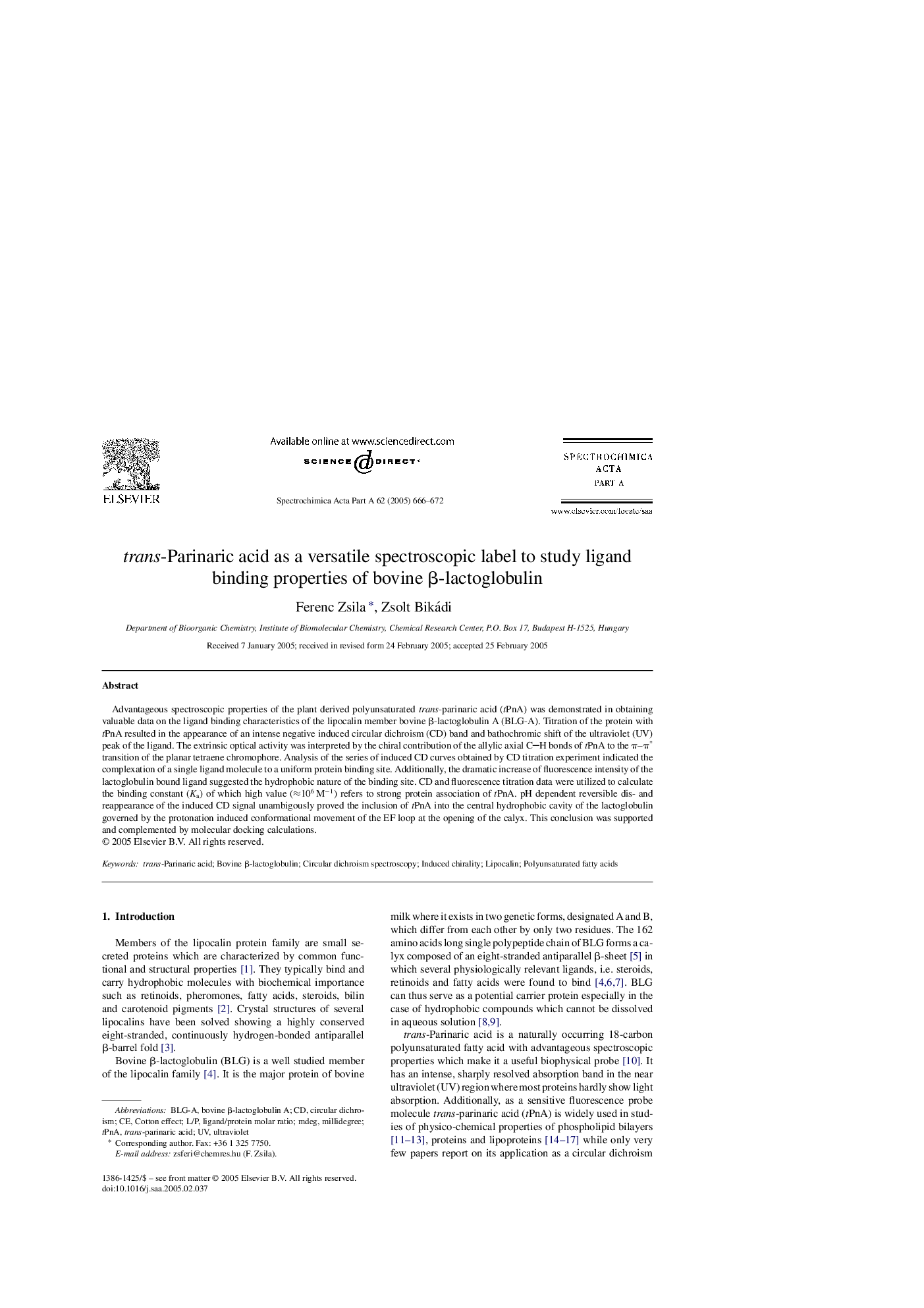| Article ID | Journal | Published Year | Pages | File Type |
|---|---|---|---|---|
| 9757077 | Spectrochimica Acta Part A: Molecular and Biomolecular Spectroscopy | 2005 | 7 Pages |
Abstract
Advantageous spectroscopic properties of the plant derived polyunsaturated trans-parinaric acid (tPnA) was demonstrated in obtaining valuable data on the ligand binding characteristics of the lipocalin member bovine β-lactoglobulin A (BLG-A). Titration of the protein with tPnA resulted in the appearance of an intense negative induced circular dichroism (CD) band and bathochromic shift of the ultraviolet (UV) peak of the ligand. The extrinsic optical activity was interpreted by the chiral contribution of the allylic axial CH bonds of tPnA to the Ï-Ï* transition of the planar tetraene chromophore. Analysis of the series of induced CD curves obtained by CD titration experiment indicated the complexation of a single ligand molecule to a uniform protein binding site. Additionally, the dramatic increase of fluorescence intensity of the lactoglobulin bound ligand suggested the hydrophobic nature of the binding site. CD and fluorescence titration data were utilized to calculate the binding constant (Ka) of which high value (â106 Mâ1) refers to strong protein association of tPnA. pH dependent reversible dis- and reappearance of the induced CD signal unambigously proved the inclusion of tPnA into the central hydrophobic cavity of the lactoglobulin governed by the protonation induced conformational movement of the EF loop at the opening of the calyx. This conclusion was supported and complemented by molecular docking calculations.
Related Topics
Physical Sciences and Engineering
Chemistry
Analytical Chemistry
Authors
Ferenc Zsila, Zsolt Bikádi,
